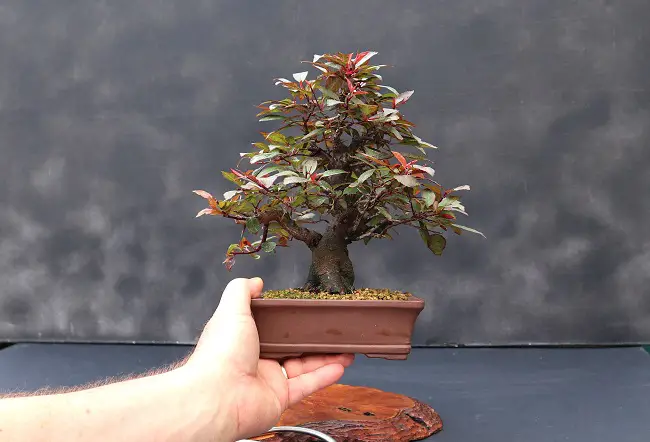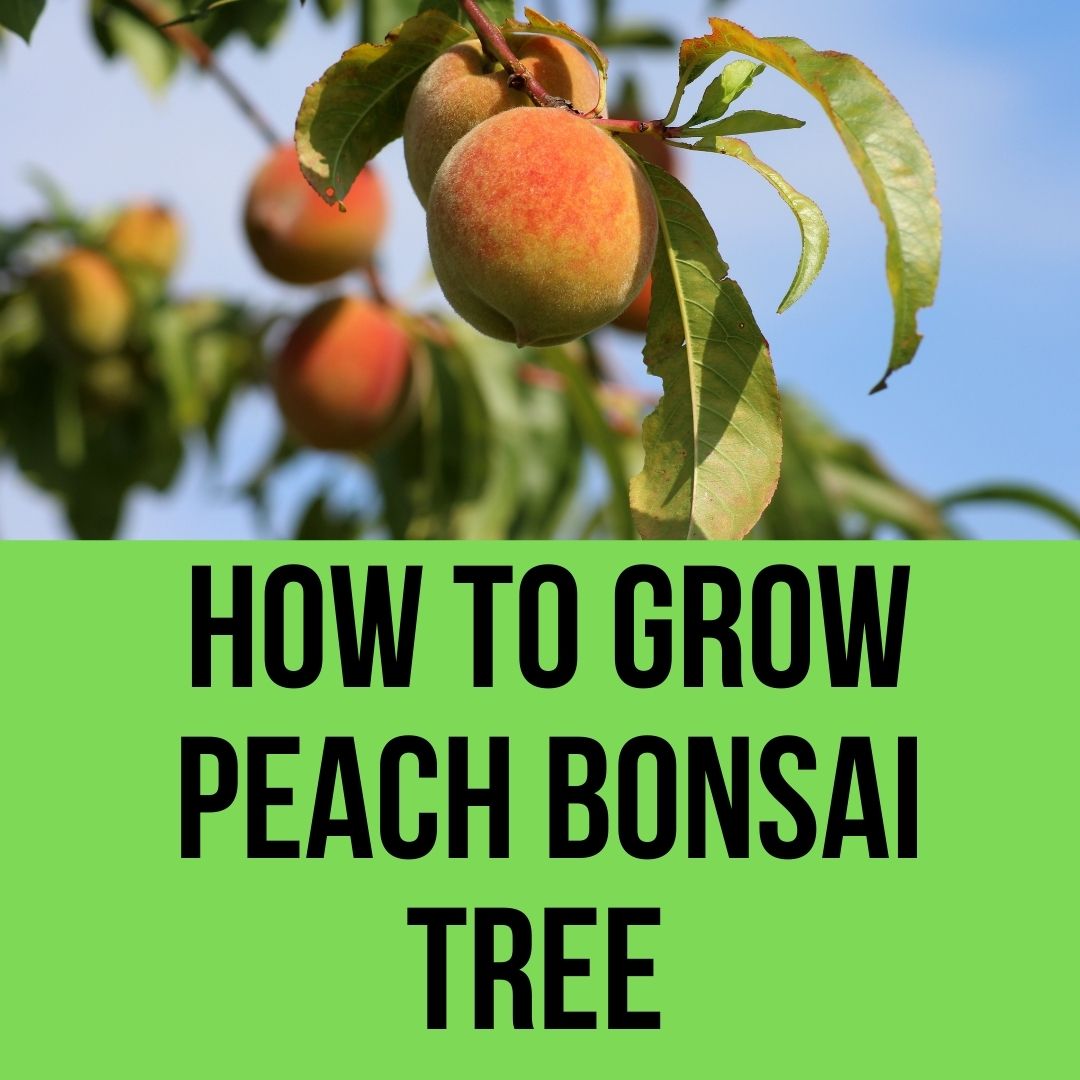Peach, a fruit of delicious taste, is thought to have originated from China. Eventually, it became widespread in Asia and then in Europe. Peach is a sweet-smelling fruit, also termed as fleshy stone fruit, and has thousands of varieties. It can be of different colors such as yellow, pink or orange, etc depending on the variety. Peaches are healthy fruits that are packed with nutrients and antioxidants. These are high in fibers containing vitamins.
Peaches can also be grown as bonsai. But growing a peach bonsai tree would need extra care, effort, and maintenance than a full-size bonsai tree.
Peaches, which belong to the genus Prunus and the kingdom Plantae are particularly very delicate and juicy fruit. Peach is also known as Prunus Persica. Peaches belonging to the family Rosaceae are mostly in vogue in Japan, China, Asian countries, and also in Europe.
Description of peach as bonsai
Bonsai trees are usually grown in a pot or container by ensuring proper nutrition and space for the roots. The purpose of bonsai is to maintain the size of the tree small by keeping the naturalistic shape intact. Peach trees usually cannot grow in cold or frosty weather. It grows best in hot summer and more than 45 degrees Fahrenheit in winter. Many varieties of peach generally take a longer time to grow feasibly in low temperatures.
How Long Does It Take To Grow A Bonsai Tree?
The best soil for growing peach trees is loamy and sandy soil. Fertilizers enriched with nitrogen works best for the growth of peaches. Pruning is done in peach trees to avert them from becoming big and high.
How to grow Peach Bonsai tree?

Planting
In the case of planting the tree, some steps are to be followed. They are:
- First, you need to make drainage holes in the container. The holes should be covered in such a way so that there is no loss of soil.
- The taproot should be checked properly before planting. If there remains any rotten, deteriorating, twisted or entangled roots then it must be removed properly. In the case of manipulating roots you need to be kind and pleasant as much as possible.
- You need to fill the pot fully half by using soil and rocks. And now you can place the tree on the top of the soil.
- The roots are to be hidden nicely with a gentle amount of soil in the container so that it becomes fully level up.
- After that the plant is to be watered correctly so that it can reach upto the roots finely. Excess water should be allowed to drain out or else it will have a negative impact on the roots.
- Now for the final and graceful look you can definitely add moss on the substratum of the soil.
Nursing:
- As trees demand an adequate amount of light, it should be placed in such a place where it gets maximum sunlight.
- When the soil is practically dried, then it needs to be watered correctly.
- The tree should be permitted to establish itself in the fresh and new surroundings. As well as it needs to be well developed before pruning. This process might claim a few months but it will undoubtedly leave a significant difference in the tree’s development and health.
- For maintaining the shape and size of the tree a branch cutter can be used. Pruning should be done on a regular basis so that the shape of the tree is maintained concisely. Emphasis should be given on the branches of the tree that look unhealthy.
- Fertilizing should be done on a regular basis. It is suggested to use a low nitrogen fertilizer in winter while nitrogen rich fertilizers in spring. It is asked to use balanced fertilizer in summer, while there is scorching heat of sun.
Shaping:
Basically, this process is done to give the tree a worn appearance except for causing damage. By using a metal wire the direction of the tree’s growth can be controlled. You need to be careful so that the wire is not excessively tight. It is to be added that the wire needs to be replaced on a regular basis as the tree grows.
A copper wire is looped around the trunk and down to the base to complete the wiring. If you want to bend the branches and make them grow in a specific manner then the wire can also be used for this purpose.
Frequently asked questions about peach bonsai tree:
- What problems may be caused to peach trees due to the scorching heat of summer?
Due to the prematurity of the tree, it may prevent the ripping of fruits. Fruits frequently coming in contact with sunlight will have a sunburn and will not be able to eat. In the presence of severe sunlight premature defoliation can also happen.
- Can a peach tree also be a bonsai?
Undoubtedly a peach tree can also be a bonsai but for that proper care and nourishment should be provided.
- Will there be any problem if a peach tree is planted unfathomably?
If each tree is planted profoundly then there will be a lack of oxygen for the roots and it also leads to soil constriction and would eventually have a bad influence on the tree’s stability. So it’s better to graft the saplings about 2 to 4 inches above the soil.
- Does hail impact peach trees?
When the hail is strong and heavy then it impacts peaches. Through the wounds of the hail pests and diseases can easily enter into the fruit. The fleshy skin of the peach can also be removed because of this. To reduce its risk, stems should be pruned off frequently and fertilizers should be used as per needs.
Importance of Peach Bonsai
When it comes to the importance of planting a bonsai tree, we can confidently state that it has numerous advantages. Most importantly, it aids in the development of self-awareness and patience. It also aids in the purification of the air. Many studies have also revealed that associating with plants might help people relax. Interacting with a bonsai, on the other hand, can assist to decrease blood pressure and relieve psychological tension.
Planting a peach bonsai provides a plethora of advantages. It will undoubtedly make a significant positive difference in your life. So, if you’re considering cultivating a peach bonsai, I can tell you that you will not be disappointed. Best of luck with your efforts and hard work.
Different Types of Peaches
There are varieties of peaches with their individual features. For example, Freestone peaches are sweet to slightly acidic in nature and are also less juicy. It basically grows from May to October. Its skin is yellow in color. Coming to Clingstone peaches, its taste is sweet and juicier and is rarely found in the market.
This grows from May to August. White-Flesh peaches are sweet to less acidic in taste and are also available in Asia. Yellow-Flesh peaches are more acidic in taste and are usually grown from May to September.
Conclusion
Fruits, without a question, serve a critical role in keeping a healthy diet. However, in the case of peaches, we can clearly see some unique and distinctive advantages.
It performs a variety of functions in the human body, including improving digestion, reducing inflammation, strengthening the immune system, and making skin healthier and more radiant. It aids in the formation of connective tissue within the human body since it contains antioxidants and vitamin C.
It helps to fight illnesses and infections since it is high in vitamin C.
